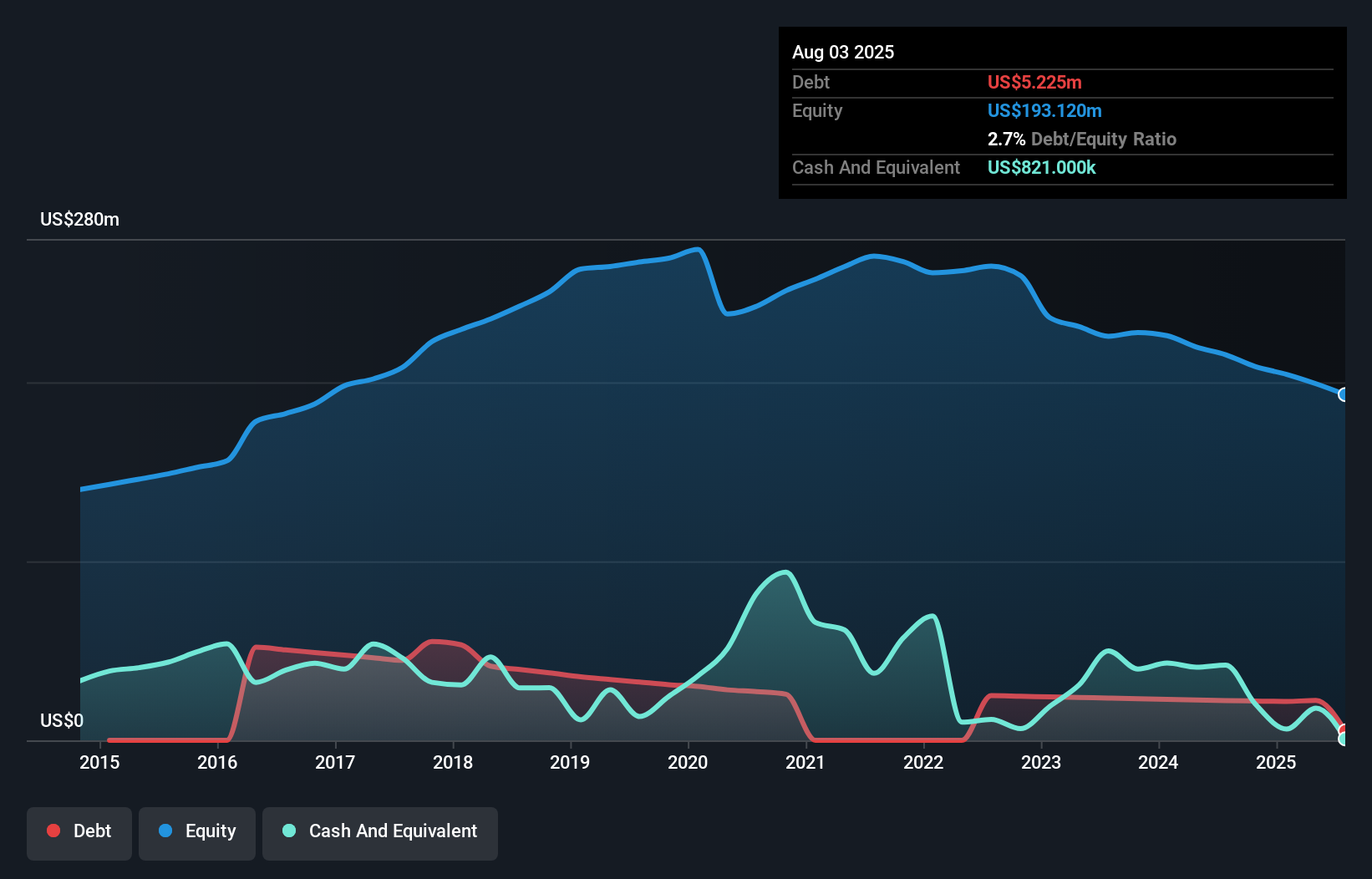- United States
- /
- Consumer Durables
- /
- NasdaqGS:HOFT
Is Hooker Furnishings (NASDAQ:HOFT) Using Too Much Debt?
The external fund manager backed by Berkshire Hathaway's Charlie Munger, Li Lu, makes no bones about it when he says 'The biggest investment risk is not the volatility of prices, but whether you will suffer a permanent loss of capital.' It's only natural to consider a company's balance sheet when you examine how risky it is, since debt is often involved when a business collapses. As with many other companies Hooker Furnishings Corporation (NASDAQ:HOFT) makes use of debt. But is this debt a concern to shareholders?
When Is Debt Dangerous?
Debt assists a business until the business has trouble paying it off, either with new capital or with free cash flow. Ultimately, if the company can't fulfill its legal obligations to repay debt, shareholders could walk away with nothing. However, a more common (but still painful) scenario is that it has to raise new equity capital at a low price, thus permanently diluting shareholders. Of course, debt can be an important tool in businesses, particularly capital heavy businesses. When we examine debt levels, we first consider both cash and debt levels, together.
What Is Hooker Furnishings's Debt?
The image below, which you can click on for greater detail, shows that Hooker Furnishings had debt of US$5.23m at the end of August 2025, a reduction from US$22.2m over a year. On the flip side, it has US$821.0k in cash leading to net debt of about US$4.40m.

How Strong Is Hooker Furnishings' Balance Sheet?
According to the last reported balance sheet, Hooker Furnishings had liabilities of US$36.1m due within 12 months, and liabilities of US$48.8m due beyond 12 months. On the other hand, it had cash of US$821.0k and US$41.4m worth of receivables due within a year. So its liabilities outweigh the sum of its cash and (near-term) receivables by US$42.7m.
Hooker Furnishings has a market capitalization of US$110.2m, so it could very likely raise cash to ameliorate its balance sheet, if the need arose. But it's clear that we should definitely closely examine whether it can manage its debt without dilution. The balance sheet is clearly the area to focus on when you are analysing debt. But ultimately the future profitability of the business will decide if Hooker Furnishings can strengthen its balance sheet over time. So if you're focused on the future you can check out this free report showing analyst profit forecasts.
Check out our latest analysis for Hooker Furnishings
Over 12 months, Hooker Furnishings made a loss at the EBIT level, and saw its revenue drop to US$376m, which is a fall of 6.3%. We would much prefer see growth.
Caveat Emptor
Over the last twelve months Hooker Furnishings produced an earnings before interest and tax (EBIT) loss. Indeed, it lost a very considerable US$15m at the EBIT level. Considering that alongside the liabilities mentioned above does not give us much confidence that company should be using so much debt. Quite frankly we think the balance sheet is far from match-fit, although it could be improved with time. However, it doesn't help that it burned through US$14m of cash over the last year. So in short it's a really risky stock. When analysing debt levels, the balance sheet is the obvious place to start. However, not all investment risk resides within the balance sheet - far from it. To that end, you should be aware of the 1 warning sign we've spotted with Hooker Furnishings .
If you're interested in investing in businesses that can grow profits without the burden of debt, then check out this free list of growing businesses that have net cash on the balance sheet.
Valuation is complex, but we're here to simplify it.
Discover if Hooker Furnishings might be undervalued or overvalued with our detailed analysis, featuring fair value estimates, potential risks, dividends, insider trades, and its financial condition.
Access Free AnalysisHave feedback on this article? Concerned about the content? Get in touch with us directly. Alternatively, email editorial-team (at) simplywallst.com.
This article by Simply Wall St is general in nature. We provide commentary based on historical data and analyst forecasts only using an unbiased methodology and our articles are not intended to be financial advice. It does not constitute a recommendation to buy or sell any stock, and does not take account of your objectives, or your financial situation. We aim to bring you long-term focused analysis driven by fundamental data. Note that our analysis may not factor in the latest price-sensitive company announcements or qualitative material. Simply Wall St has no position in any stocks mentioned.
About NasdaqGS:HOFT
Hooker Furnishings
Designs, manufactures, imports, and markets residential household, hospitality, and contract furniture products.
Good value with adequate balance sheet and pays a dividend.
Similar Companies
Market Insights
Community Narratives


Recently Updated Narratives


MINISO's fair value is projected at 26.69 with an anticipated PE ratio shift of 20x


The Quiet Giant That Became AI’s Power Grid


Nova Ljubljanska Banka d.d will expect a 11.2% revenue boost driving future growth
Popular Narratives


The company that turned a verb into a global necessity and basically runs the modern internet, digital ads, smartphones, maps, and AI.


MicroVision will explode future revenue by 380.37% with a vision towards success



